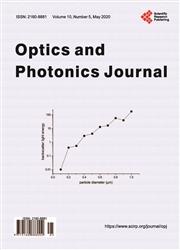Design and Modeling of a Flexible Conductive Fabric Antenna Integrated in an OLED Light Source for WIMAX Wireless Communication Systems
引用次数: 1
Abstract
This work presents a new bendable antenna for worldwide interoperability for microwave access (WiMAX) wireless communication systems. These antennas, transparent and flexible, will be easily integrated into various mdia and in particular OLED lighting which could be part of the public lighting network of tomorrow as well as on all display media. The integration of these antennas as close as possible to the end-user is a possible solution to reduce the energy consumption which goes hand in hand with the increase in the data rate. This kind of new antenna, designed to be integrated in organic light-emitting diode (OLED), was modeled from a transparent VeilShieldTM conductive fabric and was placed on a 100% polyester substrate with a thickness of 1.5 mm and a loss tangent of 0.02. We have tested and evaluated the characteristic parameters of our antenna, namely the reflection coefficient, the radiation pattern and the gain, to find out the performance of our proposed design. The performance of the transparent conductive fabric integrated in the 100% polyester substrate is tested for the application of flexible antenna operating at 3.5 GHz with a gain value of 5.38 dB. We have integrated this proposed new antenna with the OLED light source containing four layers of different materials and electrical properties: aluminum cathode layer, polymer layer, indium tin oxide (ITO) anode layer and glass substrate layer. After integration, the resonant frequency shifted to 3.52 GHz with a gain value of 4.61 dB. In addition, we also tested the concave bending on the reflection coefficient of the proposed flexible antenna taking into account the different bending angles. This work demonstrates the possibility of integrating these unconventional materials used for the proposed antenna within the OLED despite weak effects on the resonant frequency and the gain of the proposed antenna after integration.用于WIMAX无线通信系统的OLED光源柔性导电织物天线设计与建模
这项工作提出了一种新的可弯曲天线,用于全球微波接入互操作性(WiMAX)无线通信系统。这些透明且灵活的天线将很容易集成到各种mdia中,尤其是OLED照明中,OLED照明可能是未来公共照明网络的一部分,也可能出现在所有显示媒体上。将这些天线集成在尽可能靠近终端用户的位置是降低能耗的可能解决方案,能耗与数据速率的增加密切相关。这种新型天线被设计为集成在有机发光二极管(OLED)中,由透明的VeilShieldTM导电织物建模,并放置在厚度为1.5mm、损耗角正切为0.02的100%聚酯基底上。我们测试并评估了天线的特性参数,即反射系数、辐射方向图和增益,以了解我们提出的设计的性能。集成在100%聚酯基底中的透明导电织物的性能被测试用于在3.5GHz下操作的增益值为5.38dB的柔性天线的应用。我们已经将这种提出的新型天线与OLED光源集成在一起,OLED光源包含四层不同材料和电气性能的层:铝阴极层、聚合物层、氧化铟锡(ITO)阳极层和玻璃衬底层。积分后,谐振频率偏移到3.52GHz,增益值为4.61dB。此外,考虑到不同的弯曲角度,我们还测试了凹形弯曲对所提出的柔性天线反射系数的影响。这项工作证明了在OLED内集成这些用于所提出的天线的非常规材料的可能性,尽管集成后对所提出天线的谐振频率和增益的影响很小。
本文章由计算机程序翻译,如有差异,请以英文原文为准。
求助全文
约1分钟内获得全文
求助全文

 求助内容:
求助内容: 应助结果提醒方式:
应助结果提醒方式:


